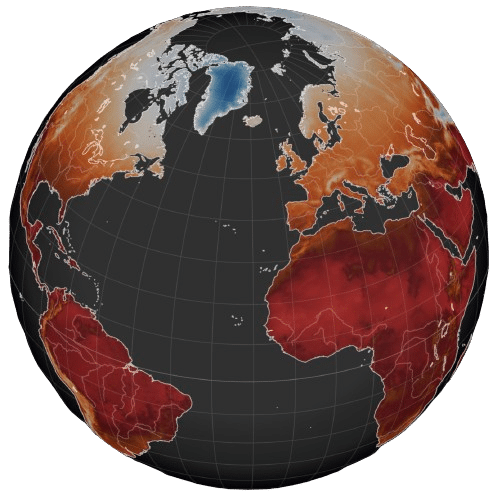Future droughts hazard
Overview
A global dataset at 0.1° degrees resolution of seven drought hazard indicators from five climate models under three Shared Socioeconomic Pathways (SSPs) scenarios from the Intergovernmental Panel on Climate Change (IPCC) Sith Assessment report (AR6). The time resolution is annual from 1981 to 2100.
Droughts dataset specifications
| Specification | Description |
| Experiment | CMIP6 |
| Scenarios | Shared Socioeconomic Pathways SSP5-8.5, SSP2-4.5 and SSP1-2.6. |
| Climate Models | The 5 models selected by the ISIMIP initiative: IPSL-CM6A-LR GFDL-ESM4, UKESM1-0-LL MPI-ESM1-2-HR, MRI-ESM2-0. |
| Spatial Resolution | 0.1° x 0.1° Global |
| Temporal resolution | Annual from 1981 to 2100 |
| Indicators | The hazard indicators are calculated based on precipitation and surface temperature: – Dry Days Index: Annual or monthly number of days with daily precipitation below 1 mm. – Consecutive Dry Days Index: Maximum number of consecutive days in a year or month with daily precipitation below 1 mm. – Number of Consecutive Dry Days Periods : Annual or monthly number of dry spells consisting of at least 5 consecutive days with daily precipitation below 1 mm. – Standardized Precipitation Index (SPI-1/SPI-3/SPI-6): Frequency and magnitude of meteorological droughts calculated over 1-, 3-, or 6-month accumulation periods, based on long-term precipitation records. – Standardized Precipitation Evapotranspiration Index (SPEI-1/SPEI-3/SPEI-6): Frequency and magnitude of climatic droughts calculated over 1-, 3-, or 6-month periods, incorporating both precipitation and potential evapotranspiration. – Number of Drought Months: Annual count of months with SPEI or SPI values below –1, indicating moderate to extreme drought conditions. – Drought Intensity Index: Annual average of the absolute value of negative SPEI or SPI scores during drought months, reflecting the severity of drought conditions. |
| Format | Netcdf, other formats possible depending on data volume. |
Supplementary information
The dataset provides climate indicators that quantify the frequency, duration, and intensity of dry conditions under historical and future climate scenarios. Based on precipitation and evapotranspiration data, these metrics characterize both short-term and long-term events by combining frequency and intensity indicators. All indicators are derived from downscaled CMIP6 climate model simulations, allowing consistent risk assessments across spatial and temporal scales.
Future droughts dataset availability
The dataset can be delivered according to your specifications, contact us for a quote.

